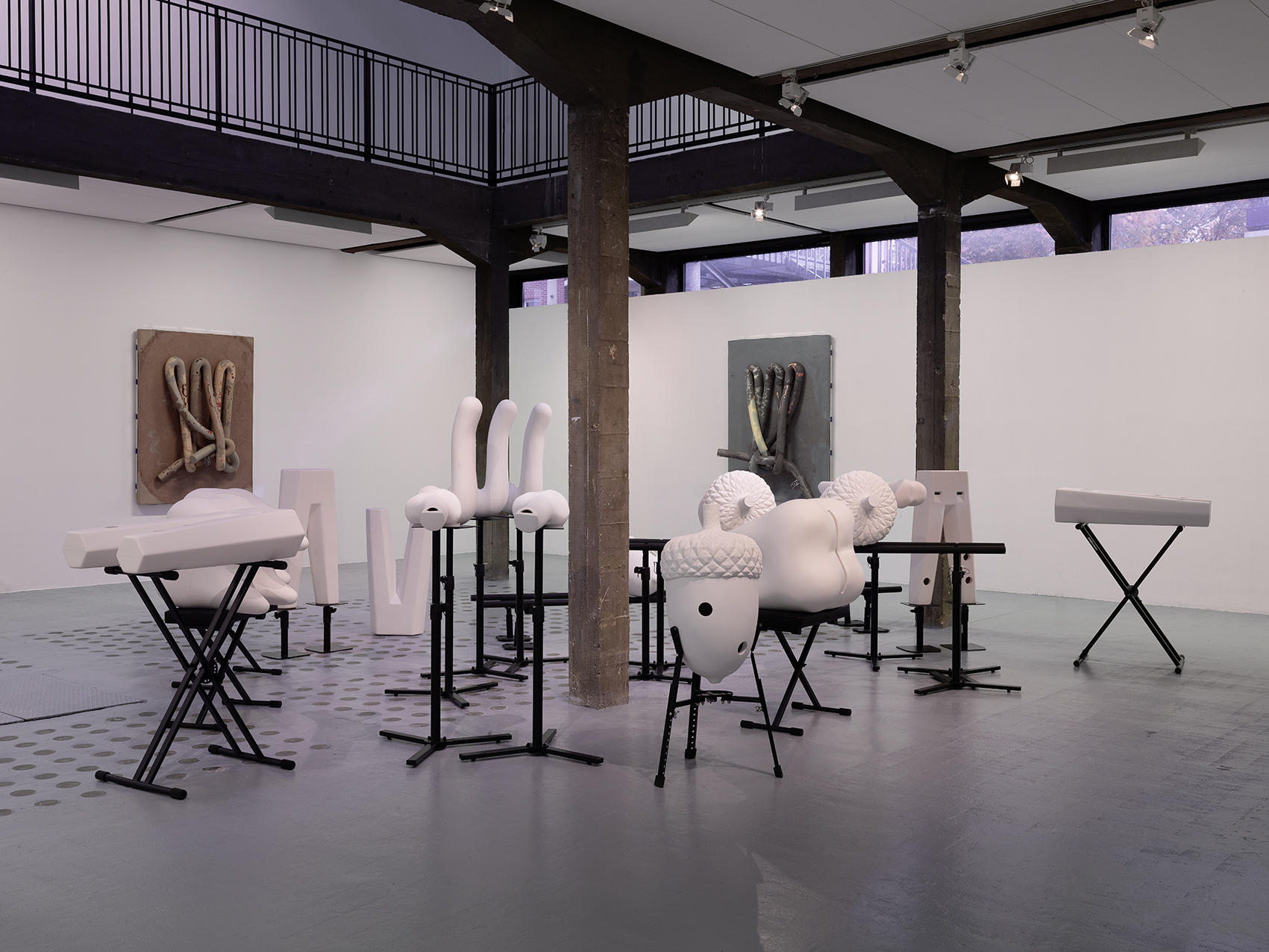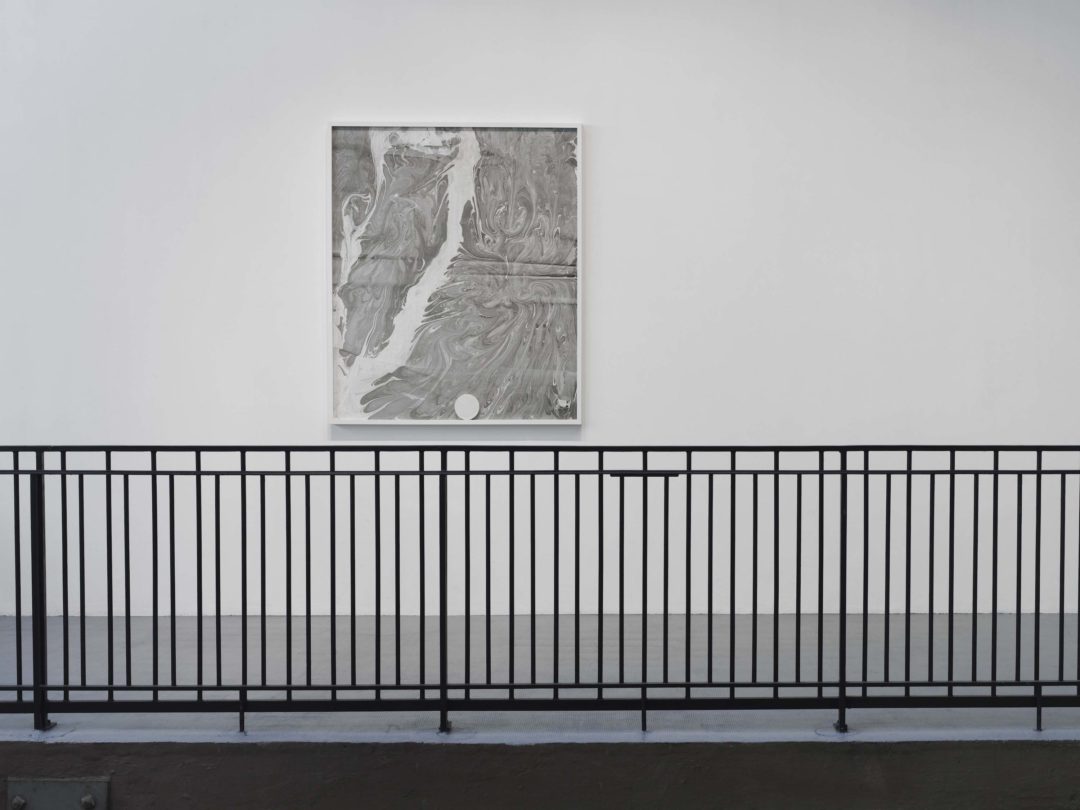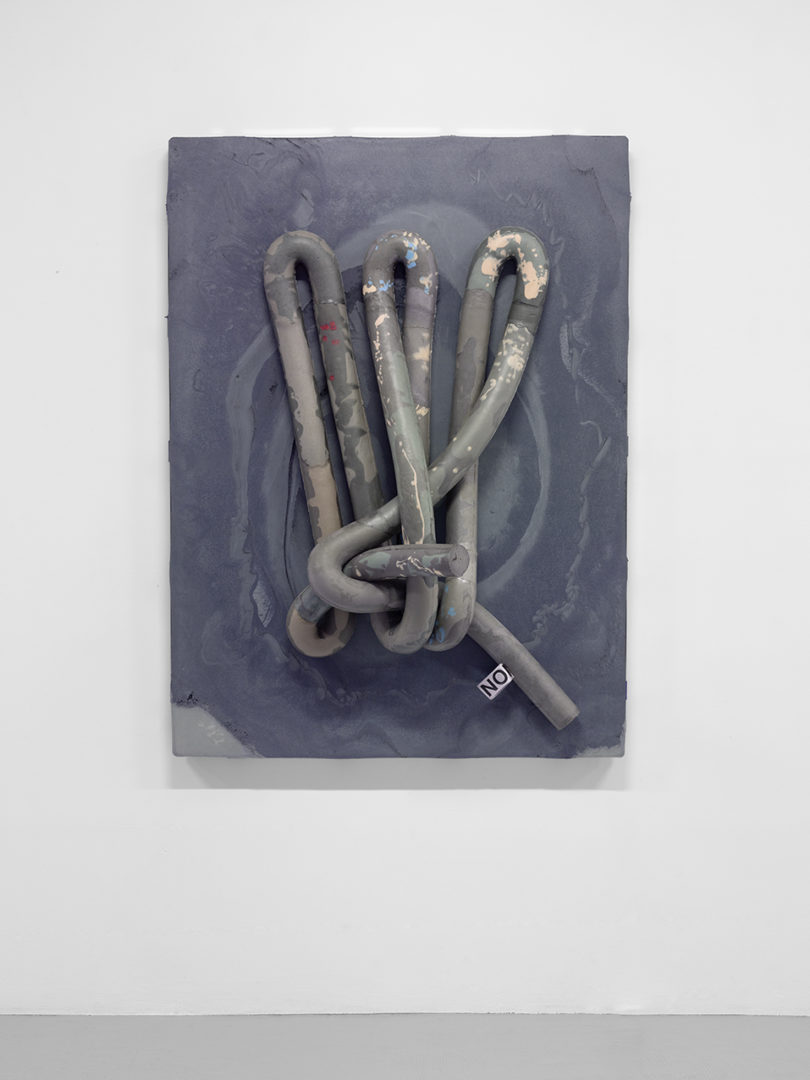Gaillard & Claude: hybrid objects, fluid forms

FRAC Normandie-Rouen, Sotteville-lès-Rouen
8.10.2022-12.03.2023
This autumn, the FRAC Normandie-Rouen is hosting an extremely ambitious exhibition, curated by its director Vincent Pécoil, dedicated to the work of Gaillard & Claude. This exhibition is a continuation of the very first retrospective of these artists at the Musée des Arts Contemporains du Grand-Hornu in Belgium. Active since the early 2000s, the couple works between Normandy and Brussels. Very much rooted in this city where they made their home, they are incredibly involved in the artistic life of Brussels in both institutional and alternative settings. It is also worth noting that they are largely invited to take part in events organised by other visual artists, confirming their status as “artists for artists”. Based on three major series that have marked their practice, this FRAC event is an opportunity to look back at a polymorphic body of work that is particularly stimulating in terms of critical and aesthetic analysis.
These two artists position themselves as artist researchers. Far from any practical specialisation, their transdisciplinary work is based on many experimental phases and visual appropriations that lead, on each occasion, to a renewal of their techniques and their use of materials. The way in which they approach the various stages of production of their works is a purely conceptual approach to art, especially in terms of the use of diverse materials. Rather than an identifiable artistic language, it would be better to speak of an “aesthetic rhetoric” built from an imbroglio of industrial techniques, forms, sciences, socio-politics and semantic effects. This always deliberately produces many enigmatic questions, relating both to the nature of the things exhibited and to the social context surrounding them, opening the door to a multitude of potential subjective interpretations. In this respect, Denis Gielen rightly refers to their work as an “art of anomalies and exceptions”, which redefines the boundary between normality and abnormality.
The very essence of Gaillard & Claude’s thinking and production recalls Bruno Latour’s epistemological thinking on the emergence of new “strange objects” that invade our world: “Trust in modernity no longer rings true in art, economics, politics, science, or technology.” The end of the regime of progress and overabundance of our “modern” society, at the time of the development of the Internet, is proving to be a fertile source for generating alternative discourses. In the 2010s, this change in thinking had a profound effect on the generation from which this pair of artists emerged. This transition is embodied in their works by the appearance of devices for the hybridisation of forms, materials and discourses.

Between 2010 and 2012, the duo created a series of paintings, “The Group and the Family”, made from paper covered with paint stains using an old printing technique: marbling. This is done by bringing pigments and binders into contact with a sheet of paper placed on the surface of a vat filled with water. The use of marbling subtly transforms each pictorial composition into psychedelic abstraction, close to dripping, which derives from the fact that it is not possible to manage this process for such formats. There is therefore a conscious assumption of the element of chance of the creative process, even if it can be more or less controlled with a stick. Each painting singularly retains a fluid, mineral aspect as a direct nod to this process. Intended as an essential feature of their painting, fluidity introduces flexibility. These proliferations of stains on the same format conjure up the use of similar ink compositions used for therapeutic purposes by psychiatrists, such as Hermann Rorschach, in the diagnosis of certain mental disorders such as schizophrenia or autism. This pictorial abstraction that is created randomly provides a form of distancing and letting go for viewers that lends itself to the game of interpretative projections.
Continuing this reflection on therapy and medicine, Gaillard & Claude include an oversized paracetamol tablet made by themselves at the bottom of each frame. The oversized nature of the tablet refers to the idea of a “pyjama drug”, a harmless placebo, which should be administered collectively. The rounded shape and defined white monochrome colour of the drug readily stand out from the polychrome, informal composition, as a kind of footnote or punctuation mark that would conclude the work. The artists’ pairing of the haphazard technique of marbling with this medical element also underlines a causal link between a variety of data that is always in opposition: polychrome/monochrome, craft/industry, disease/cure, etc. In an era of increasingly widespread malaise, this combination of therapeutic and creative might be the solution to the prevailing post-Covid gloom through humour and chance.
This toying with hybridisation of shapes in the design of strange objects is most marked in Orchestral Issues (2015-2016). This is a device made from unusually shaped plaster sculptures hanging on music stands used in concerts or for studio recordings. This sculpted group forms a strange surreal philharmonic ensemble that draws its formal inspiration from the vernacular collections of the Brussels Musical Instruments Museum. Their bizarre morphology results from a combination of organic, technical and vegetal forms, identifiable as teeth, acorns, trousers and even bones. However, our gaze is also disturbed by a strong erotic connotation which extends far beyond each of the objects on display. If you look closely, you will easily recognise orifices, buttock cracks, or even erect phalluses…
Each piece on display is both the musical instrument waiting to be played and the actor-musician awaiting their future performance. The artists and Lili Reynaud-Dewar illustrated this double identity in the publication Oompah, Tom-tom, Tootle-too & Toot (2017), which features a dialogue between four members of the orchestra in the backstage area of a concert hall. This hybrid instrumental ensemble appears to be taken directly from the fabulous ‘gala of the incomparable” that was to entertain the shipwrecked in Raymond Roussel’s mythical novel Impressions of Africa. This hypothetical connection would place Gaillard & Claude in an artistic and literary lineage of the “machines célibataires” (bachelor machines), marked by the figures of Marcel Duchamp, Francis Picabia and Alfred Jarry.

Each series of works, resulting from these various experimental phases, takes a disenchanted and critical look at our contemporary era, without however falling into the trap of a fatalistic and depreciatory form of obscurantism. While the overabundance of polluting plastic materials is omnipresent in our environment, to the point of becoming a subject of controversy, Gaillard & Claude use it as an object of experimentation with strong formal and physical potential. Derived from petroleum, polyurethane becomes the material and the main subject of their latest series of works: “Talking Baloney” (2020-2021), a set of bas-reliefs made from this single material, which has remarkable plastic properties in terms of flexibility, resistance and expansiveness. Formally, this visible malleability of the material is reminiscent of the soft sculptures of Claes Oldenburg and Anita Molinero’s chaotic works. Long tubes are fixed to a dark, chromatically indefinable foam surface. These tubes are knotted together to produce an embryonic form of writing in volume: “By giving volume through loops, knots and suspensions, we touch on the curve of a consonant, a vowel or an ampersand.” The ubiquity of polyurethane in these works inevitably raises questions about the significance of the choice of material used, which here seems deliberately difficult to sustain. This ambiguity is further accentuated by the presence of a “NO” label attached to the ends of each sculpture.
The formal and conceptual features that we have encountered in the course of these various plastic works are constantly changing, making any attempt at definition and classification difficult for the viewer. It is perhaps this palpable indefinability that makes the work of Gaillard & Claude so rich and powerful.
1 Denis Gielen, “Le Pas-de-sens”, Gaillard & Claude. A Certain Decade, Musée des Arts contemporains Grand-Hornu, 2020, p. 3.
2 Bruno Latour, Nous n’avons jamais été modernes, essai d’anthropologie symétrique, Paris, Éditions de la découverte, 2021 (1997), p. 19.
3 Gaillard & Claude, Oompah, Tom-tom, Tootle-too & Toot, Dijon, Les presses du réel, 2017.
4 Patrice Joly, interview with Gaillard & Claude, Zerodeux, https://www.zerodeux.fr/news/gaillardclaude-2/
- From the issue: 103
- Share: ,
- By the same author: To Lose Oneself Without Fear in the Works of Carla Andra, Jeremy Deller at Rennes, Daniel Pommereulle and Mathis Altmann at Pasquart,
Related articles
Streaming from our eyes
by Gabriela Anco
Don’t Take It Too Seriously
by Patrice Joly
Déborah Bron & Camille Sevez
by Gabriela Anco

